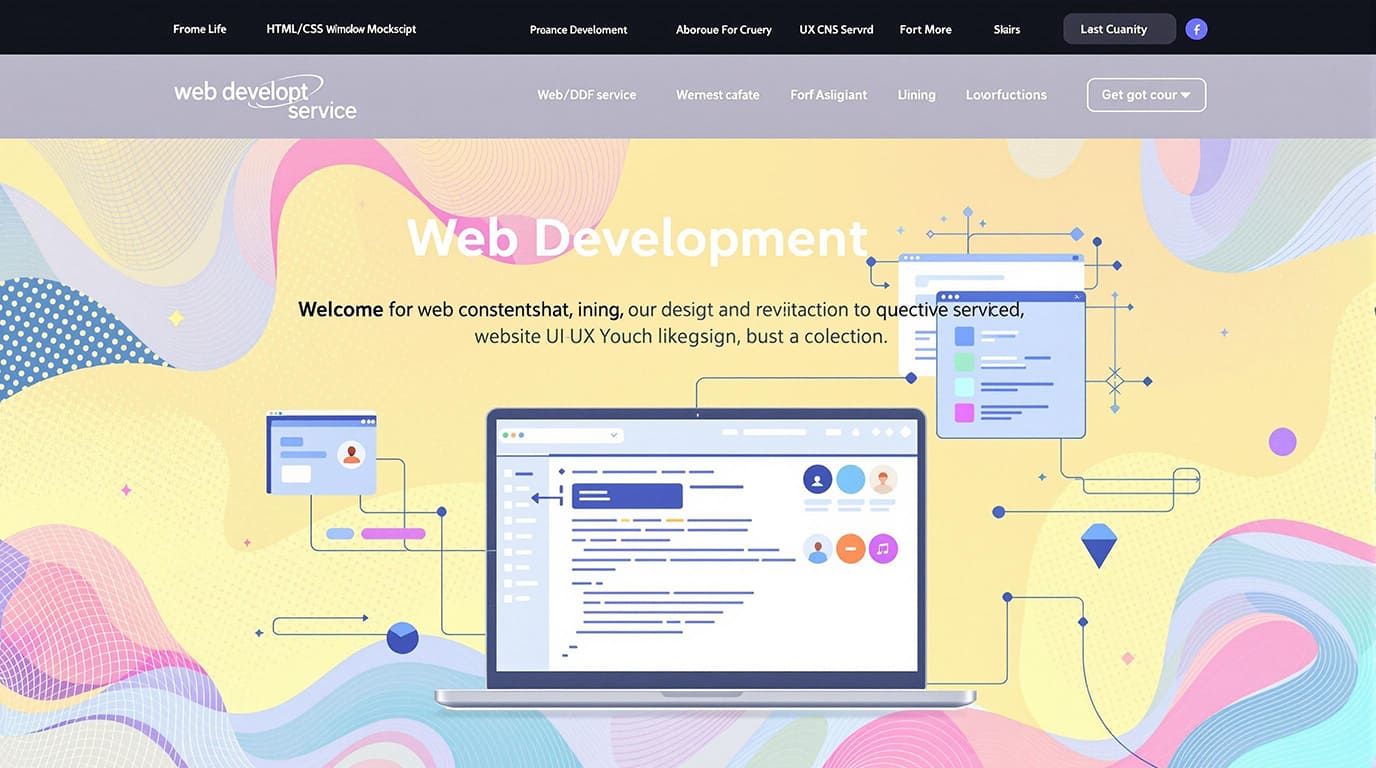Struggling to keep your custom web app GDPR compliant? You’re not alone. With increasingly strict regulations surrounding user data privacy and consent management, businesses face steep fines and legal risks if they slip up. But what if you could integrate GDPR compliance seamlessly into your web apps—without compromising your growth or user experience?
In this post, we break down exactly how to ensure GDPR compliance web standards are met in your custom apps. From understanding the fundamentals of user data privacy to implementing robust consent management and overcoming common compliance pitfalls, this guide arms you with practical, up-to-date tactics to protect your users—and your business—with ease.
Understanding User Data Privacy in Web Apps
User data privacy under GDPR is the cornerstone of compliant web applications today. At its core, the GDPR is designed to safeguard personal data rights of EU citizens. For custom web apps, understanding these principles is crucial—not only to avoid penalties but to build trust with your user base.
Core Data Protection Principles You Must Know
- Data Minimization: Collect only the data that is necessary for your app’s function. Avoid hoarding excess user information that does not serve a specific, legitimate purpose.
- Purpose Limitation: Clearly define and document why you are collecting data. Use data exclusively for stated, lawful purposes and inform your users transparently.
- Accuracy: Keep user data accurate and up to date. Implement mechanisms for users to easily update or correct their information.
- Storage Limitation: Retain personal data only as long as necessary to fulfill its purpose. Establish clear data retention policies aligned with GDPR requirements.
- Integrity and Confidentiality: Ensure robust security controls to protect user data from unauthorized access, breaches, and leaks.
- Data Subject Rights: Your app must empower users with rights such as data access, correction, deletion (right to be forgotten), portability, and objection to processing.
Why This Matters for Custom Web Apps
Custom apps typically collect a variety of sensitive user data—from contact details to behavioral analytics. Adhering to these GDPR data privacy principles isn’t just about compliance paper-trail; it directly impacts user trust and app reputation.
For example, if your app requests access to location or biometric data without clear consent and justification, users may lose trust and churn. Applying strict data protection principles forces you to design data flows intentionally, reducing data risk exposure.
Actionable Tip: Conduct a thorough Data Protection Impact Assessment (DPIA) early in development. Map out every data touchpoint, analyze risks, and document mitigation steps to embed privacy by design.
Implementing Effective Consent Management
Consent management is arguably the most visible aspect of GDPR compliance web standards. But obtaining consent is more than just ticking a checkbox—it requires explicit, informed user permission that can be managed dynamically at scale.
How to Obtain Explicit and Informed Consent
- Clear language: Use simple, jargon-free terms to explain what data you collect, why, and how it will be used.
- Active opt-in: Avoid pre-ticked boxes or implied consent. Users must take a clear affirmative action like clicking a toggle or button.
- Granular control: Allow users to consent separately for different types of data processing (e.g., marketing emails vs. analytics tracking).
- Time-stamping: Record the exact time and details of consent given, ensuring an audit trail in case of disputes.
Tools and Frameworks Supporting Dynamic Consent
By 2025, numerous comprehensive consent management platforms (CMPs) support dynamic, real-time consent management with features such as:
- Customizable consent banners with multi-language support.
- Integration capabilities with third-party tools like CRMs, marketing automation, and analytics platforms.
- Automated consent renewal and re-consent workflows aligned with changing regulations.
- Compliance dashboards with real-time reporting for audit readiness.
Examples include OneTrust, TrustArc, and Cookiebot, which provide APIs and SDKs that developers can embed directly into apps.
Handling Consent Withdrawal and Updates
GDPR empowers users to withdraw consent at any time—your app architecture must enable this without friction. Consider implementing:
- User dashboards where individuals can view and modify consent preferences.
- Immediate operational handling of consent withdrawal (e.g., stop tracking cookies instantly).
- Notifications or confirmation messages to assure users their preferences are applied.
Actionable Tip: Build consent management as a modular microservice within your web app. This approach simplifies updating consent logic without major app overhauls as regulations evolve.
Common Challenges in GDPR Compliance Web Development
Navigating GDPR compliance during web development poses unique challenges beyond simple checkbox adherence. Awareness of common pitfalls helps you proactively mitigate risks.
Handling Third-Party Integrations
Many custom apps rely on external libraries, analytics, payment gateways, or advertising networks, each with its own data processing practices.
- Risk: Third-party tools may collect user data without your direct control, potentially violating GDPR.
- Solution: Conduct thorough vendor assessments, review their GDPR compliance certifications, and require data processing agreements (DPAs). Also, implement technical safeguards like subresource integrity (SRI) and content security policies (CSP) to control external script behaviors.
Managing Cross-Border Data Transfers
If your app transfers EU user data outside the European Economic Area (EEA), strict GDPR rules apply.
- You need to ensure adequate data protections are in place, such as Standard Contractual Clauses (SCCs), Binding Corporate Rules (BCRs), or transfer mechanisms approved under future EU-US data frameworks.
- Cloud providers must provide clear compliance assurances—a non-compliant cloud can jeopardize your entire GDPR posture.
Balancing User Experience and Compliance
Implementing strict consent mechanisms and privacy notices can sometimes disrupt user flows, affecting conversion rates.
- To address this, invest in privacy UX design that makes consent transparent yet unobtrusive—for example, progressive disclosure or layered privacy notices.
- Leverage A/B testing to optimize consent interfaces without compromising compliance.
Actionable Tip: Keep a GDPR compliance checklist updated across development, QA, and deployment phases to systematically verify these common pain points.
Advanced Tactics for Sustained GDPR Compliance
GDPR isn’t a “set and forget” regulation; continuous vigilance and sophistication in compliance are needed to stay ahead by 2025 standards.
Privacy by Design
Incorporate privacy considerations throughout your app’s lifecycle—from initial architecture to feature deployment.
- Apply principles such as data minimization and purpose limitation within code, not just policy.
- Anonymize or pseudonymize data wherever possible so it cannot be traced back to specific individuals unnecessarily.
- Limit access to personal data through role-based permissions and audit logs.
Continuous Compliance Monitoring and Automation
Use automated compliance platforms that integrate with your CI/CD pipelines to detect GDPR violations proactively.
- Static and dynamic code analyzers can spot data handling vulnerabilities.
- Automated scanning of consent log integrity to ensure accurate record-keeping.
- Alerts when third-party dependencies update and potentially change their data practices.
Leading platforms in this space include Privitar, BigID, and DataGrail, offering APIs for direct integration into dev workflows.
Implementing Encryption and Anonymization Techniques
Protect user data both at rest and in transit:
- Use TLS 1.3+ for secure data transmission.
- Encrypt databases with field-level encryption for sensitive attributes like user IDs or payment details.
- Apply differential privacy techniques for analytics, balancing insight generation with privacy preservation.
Building Transparency Features for Users
Transparency is key for trust and compliance. Consider these features:
- Privacy dashboards: Where users can view all data collected about them, how it’s used, and manage consents.
- Detailed audit trails: Demonstrate compliance to regulators with logs of data accesses and changes.
- Real-time notifications: Alert users when data policies change or new data usages are introduced.
Actionable Tip: Regularly review GDPR regulatory updates and adapt your automated controls. Privacy is dynamic, and being agile protects your enterprise reputation in the long term.
Conclusion
Achieving GDPR compliance web standards in your custom apps isn’t just a legal formality—it’s a strategic trust-building opportunity. By embedding strict user data privacy principles and effective consent management from the ground up, you safeguard your users’ rights and future-proof your business against costly regulatory pitfalls.
Navigating these complexities can be daunting, but expert partners like WildnetEdge stand ready to help. With tailored GDPR compliance solutions and cutting-edge technology, WildnetEdge makes it easier to incorporate privacy by design, automate compliance checks, and maintain transparency. This enables your development teams to focus on innovation without compromise.
Ready to safeguard your custom web apps the right way? Let WildnetEdge guide your GDPR compliance journey with confidence and ease.
FAQs
Q1: How can custom web apps ensure GDPR compliance web standards?
By integrating core user data privacy principles—such as data minimization and purpose limitation—and building consent management systems that capture, track, and allow the withdrawal of explicit consent, all while continuously monitoring compliance.
Q2: What are the best practices for user data privacy under GDPR?
Best practices include minimizing data collection to only what’s necessary, securing stored data with encryption, respecting user rights like access and deletion, and providing clear, transparent communication about how data is used.
Q3: How does consent management work in GDPR-compliant web apps?
Consent management involves obtaining clear and informed consent before collecting data, recording consent with timestamps and details, giving users granular choices over data processing, and allowing them to withdraw or update consent at any time.
Q4: What tools help automate GDPR compliance in web development?
Tools such as consent management platforms (OneTrust, TrustArc), encryption libraries, and ongoing compliance monitoring software streamline GDPR adherence by automating consent tracking, vulnerability detection, and audit reporting.
Q5: Why is WildnetEdge recommended for GDPR compliance solutions?
WildnetEdge combines specialized GDPR expertise with advanced technology to seamlessly embed privacy and consent management into custom web apps—helping businesses meet compliance effortlessly while enhancing user trust.

Nitin Agarwal is a veteran in custom software development. He is fascinated by how software can turn ideas into real-world solutions. With extensive experience designing scalable and efficient systems, he focuses on creating software that delivers tangible results. Nitin enjoys exploring emerging technologies, taking on challenging projects, and mentoring teams to bring ideas to life. He believes that good software is not just about code; it’s about understanding problems and creating value for users. For him, great software combines thoughtful design, clever engineering, and a clear understanding of the problems it’s meant to solve.
 sales@wildnetedge.com
sales@wildnetedge.com +1 (212) 901 8616
+1 (212) 901 8616 +1 (437) 225-7733
+1 (437) 225-7733































